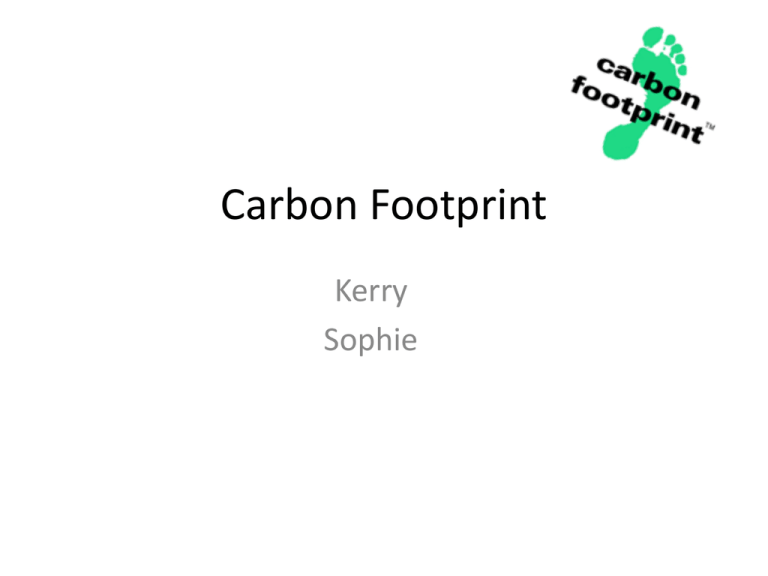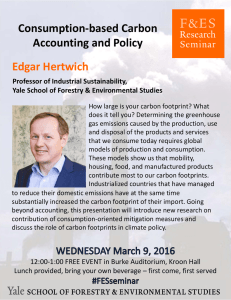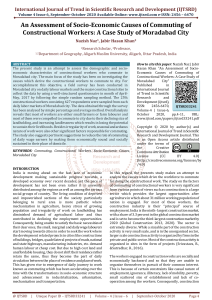Carbon Footprint Kerry Sophie
advertisement

Carbon Footprint Kerry Sophie What is a Carbon Footprint ? • A carbon footprint is “the total set of greenhouse gas emissions caused directly and indirectly by an individual, organization, event or product” (UK Carbon Trust 2008) • Greenhouse gases, are essential to helping determine the temperature of the Earth, without them the Earth would be considerably colder. • Individuals and businesses produce carbon dioxide from daily activities such as driving, heating, and the consumption of products and services. http://www.sciencemag.org/cgi/content/abstract/302/5651 /1719 Who does it effect? • Carbon emissions effects everyone • Greenhouse gases are produced in our day-to-day lives through burning fossil fuels for electricity, heating and transportation. • Simple actions such as switching the TV off standby can help reduce both fuel bills and CO2 emissions. Reducing carbon footprint/ Carbon diets • A low carbon diet refers to making lifestyle choices to reduce the greenhouse gas emissions resulting from energy use. • A carbon calculator is where you can determine your carbon footprint, a measurement of how many pounds of global-warming-causing carbon dioxide you alone or you and your family are emitting annually into the atmosphere from your daily lives. • Simple changes such as changing light bulbs to fluorescent compacts will lose around 8,500 pounds a year. • Drying clothes on a line instead of using a drying machine will lose around 2,500. • Taking up cycling to work or school or walking more often can result in up to a loss of 7,600 pounds in transportation emissions a year. http://www.time.com/time/health/article/0,85 99,1552237,00.html The Commuter • Commuting is regular travel between one's place of residence and place of work or full time study. • Commuters often travel via car and often alone or via trains and buses • It has now been proven that commuting by car is a major factor contributing to air pollution • Most commuters travel at the same time of day, as most people work an average 9am – 5pm day. This causes the morning and evening "rush hours", with congestion on roads and public transport systems. • Some areas have a large amount of commuters with cyclists and walkers, however, this is still no where near as much as people commuting via car. http://www.census.gov/PressRelease/www/releases/archives/american_commu nity_survey_acs/001695.html What is being done? Congestion charge in London • Aims to reduce traffic congestion and improve journey times by encouraging people to choose other forms of transport, thus reducing Carbon emissions ‘Greener Cars’ • New developments within the car industry has made it more appealing to the masses: • performance, price, reliability, style, comfort have all been improved Park & Ride • Aimed at commuters, in order to reduce the congestion within large cities Single occupants vs. Shared and Public transport • Cars with a single occupant use fuel and roads less efficiently than shared cars or public transport Traffic Cost Pollution • Commuting alone by car is often a more efficient method for the people doing the commute, as their commute times tend to be lower • Public transport often occurs delays and can become cramped and uncomfortable • However public transport can be less stressful with regards to traffic and congestion. • Using a train or bus is much more environmentally friendly. http://www.census.gov/PressRelease/www/releases/archives/american_community_survey_





